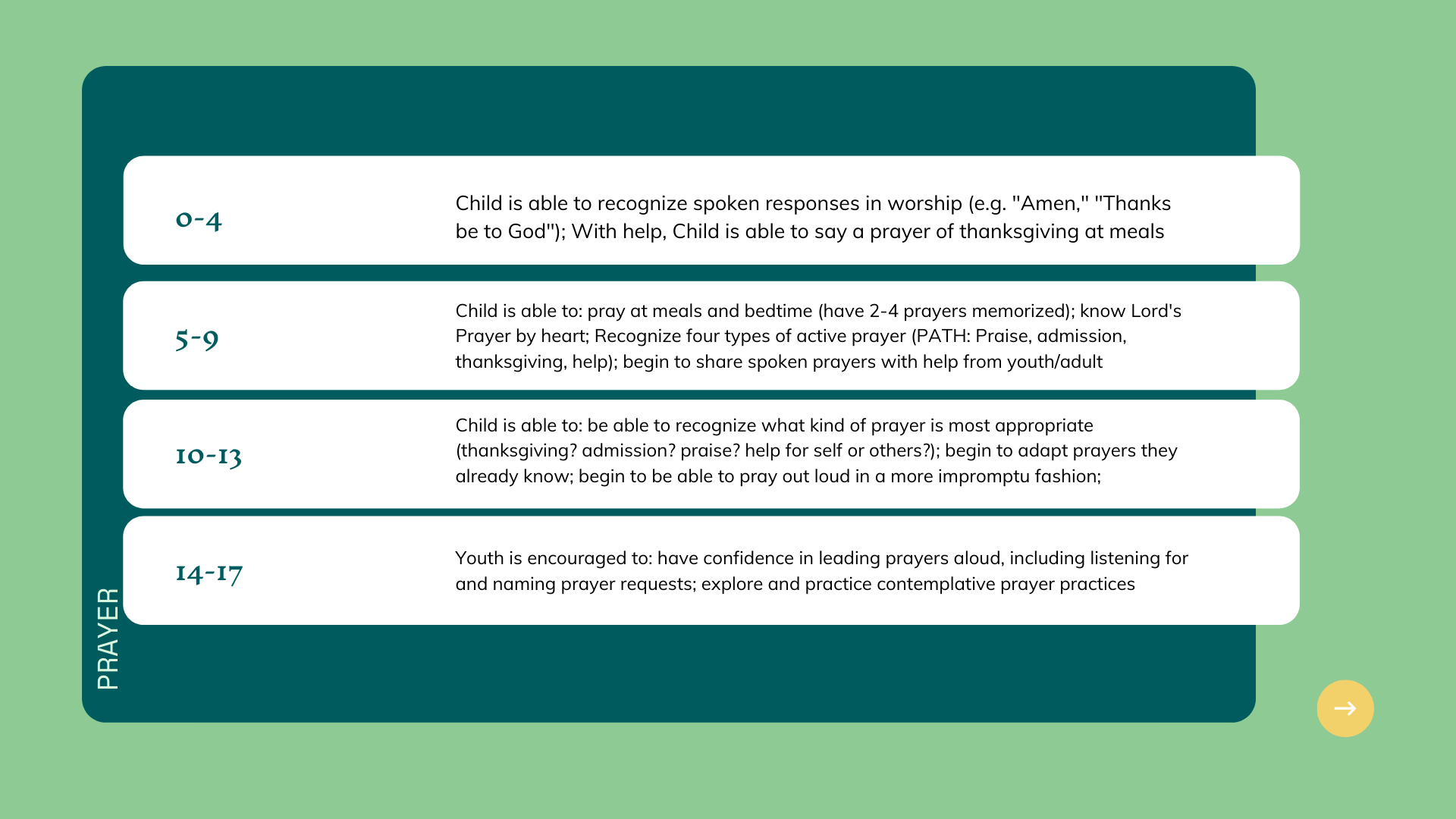After selecting their guiding scripture—The Greatest Commandment (Matthew 22: 35-40, Mark 12:18-21, Luke 10:25-28) and discerning and naming the eleven core components of faith formation, the task force reflected on how we, (as individuals and a community, in our homes and in our building and in the world), might engage and live out these core components in meaningful ways. The task force recognized and acknowledged that different life stages requires that how we think, discuss, and practice these core components. The task force felt the approach should vary based on developmental capacities and life experiences. They named the following life stages to help determine and name specific ways of living out these core components throughout one’s whole life:
Ages 0-4 Young Adult 1 (College Age)
Ages 5-9 Young Adult 2
Ages 10-13 Middle Adult
Ages 14-17 Senior Adult
So how might an 8 year old practice prayer? How might a senior adult love God with their heart, mind, and body?
The task force next reflected on specific ways these core components could be lived out throughout one's life. Then, they reflected on how these eleven core components might be integrated into living out the greatest commandment.
Below, you'll find examples of we might practice and teach prayer throughout all the life stages and how we might integrate the eleven core components for elementary school children and senior adults into understanding and living out the Greatest Commandment. As you explore these examples, you’re invited to reflect on these questions:
How has your understanding and practice of prayer changed throughout your life? How might we, as a congregation, be able to empower and equip our community to live out this greatest commandment?




